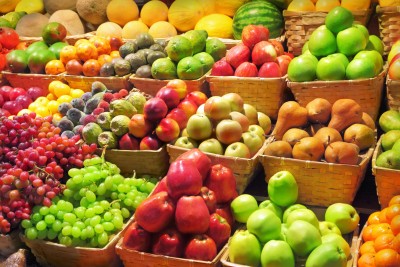By Oliva Wilson
Staff writer for Wake Up World
In an era where urban pollution clouds the air we breathe, a groundbreaking study from the University of Surrey presents a verdant solution that beautifies our spaces and purifies our air. This new research, published in the Science of the Total Environment journal, sheds light on how green walls can serve as natural air filters, with certain plants leading the battle against pollution.
The Living Lungs of Urban Spaces
[pro_ad_display_adzone id=”110028″]
Green walls and vertical gardens that bring a breath of fresh air to concrete jungles are more than just a visual delight. They are nature’s answer to urban pollution. “By planting vertically on a green wall, communities can clean up their air without taking up too much street space,” states Mamatha Tomson, a postgraduate researcher at the University of Surrey. This innovative approach not only maximizes limited urban areas but also harnesses plants’ inherent air-cleansing powers.
How Plants Clean the Air
The mechanism behind this natural air filtration is a two-step process. Initially, plants capture pollution particles on their leaves. Following this, rainfall acts as a natural cleaner, washing the pollutants to the ground. However, not all plants are equally efficient in this crucial task. The study’s findings emphasize that the success of green walls in purifying air significantly depends on the species selected, highlighting the role of leaf shape and micromorphological surface properties.
The Champions of Air Purification
Among the ten species tested on a custom-built 1.4m green wall beside the A3 in Guildford, Evergreen Candytuft and Ivy emerged as superior pollution trappers. Their leaves, adept at capturing large and small pollutant particles, stand out in the green wall’s arsenal against urban pollution. Lavender, with its hairy leaves, excelled in releasing the captured pollutants when washed by rain, making it a standout performer in the study. Similarly, Candytuft and Marjoram showed a remarkable ability to shed smaller particles, ensuring a more thorough detoxification of the air.
Green Walls: A Blueprint for Cleaner Cities
The implications of this research extend far beyond the academic realm. Professor Prashant Kumar, director of the University’s Global Centre for Clean Air Research (GCARE), urges urban planners and infrastructure experts to consider these findings. “Having a green wall is a great way of removing pollution — but what you plant on it can make a big difference to how successful it will be,” he explains. This insight offers a blueprint for cities worldwide to incorporate green walls strategically, leveraging the specific air-purifying strengths of plants like Lavender, Marjoram, and Ivy.
A Step Towards Sustainable Urban Living
This study not only addresses the immediate concerns of air quality but also lays the groundwork for a sustainable urban future. It’s a clarion call for integrating nature into our urban planning, a reminder that the solutions to some of our most pressing environmental issues can be found in the very essence of nature itself.
Implementing Effective Green Walls: A Practical Guide
Creating an effective green wall requires strategic planning and selecting the right plant species. Here are some practical tips for those looking to install a green wall:
Choosing the Right Plants
Based on the study from the University of Surrey, certain plants are more effective at purifying air than others. Lavender, Marjoram, and Ivy, in particular, have shown exceptional abilities in removing pollutants from the air. Here’s why these plants are effective and how they can be incorporated into green walls:
- Lavender: Known for its fragrant flowers and hairy leaves, Lavender excels at catching and holding onto pollutants. The rain then washes these pollutants to the ground, effectively removing them from the air.
- Marjoram: Similar to Lavender, Marjoram has properties that allow it to trap smaller particles of pollution on its leaves, which are then washed away by rain.
- Ivy: Ivy leaves, especially the evergreen variety, are proficient at trapping both large and small pollutant particles, making it a powerhouse for air purification.
Design Considerations
- Plant Diversity: A mix of species ensures a broader range of pollutants are captured. Incorporating Lavender, Marjoram, and Ivy with other plants can create a more efficient green wall.
- Leaf Morphology: The study highlights the importance of leaf shape and the micromorphological properties of plant surfaces in trapping pollutants. Consider plants with diverse leaf shapes and textures.
- Maintenance Needs: Different plants require different levels of care. Opt for a combination that matches your maintenance capacity.
Installation Tips
- Structure: Ensure your green wall structure can support the weight of the plants, soil, and irrigation system. Use sturdy frames and consider the wall’s exposure to wind and sun.
- Irrigation: A drip irrigation system is often most efficient, ensuring plants receive the right amount of water without wasting resources.
- Accessibility: Design your green wall so all plants are easily accessible for maintenance tasks like pruning and replacing.
Maintenance and Care
- Regular Checks: Monitor plant health, water distribution, and signs of pest infestations.
- Pruning: Keep the wall tidy and healthy by regularly removing dead or overgrown branches.
- Nutrition: Fertilize your plants as needed to ensure they have the necessary nutrients to grow and thrive.
Community Engagement and Education
Implementing a green wall can also serve as an educational tool for communities, raising awareness about the benefits of urban greenery and sustainable living practices. Engaging with local schools, community centers, and environmental organizations can amplify the impact of your green wall project.
Embracing the findings of this pivotal study means more than just planting a few green walls; it’s about reimagining our cities as living, breathing ecosystems. It’s a vision of the future where urban development and nature go hand in hand, ensuring a healthier, more sustainable world for generations to come.
Journal Reference:
- Mamatha Tomson, Prashant Kumar, K.V. Abhijith, John F. Watts. Exploring the interplay between particulate matter capture, wash-off, and leaf traits in green wall species. Science of The Total Environment, 2024; 921: 170950 DOI: 10.1016/j.scitotenv.2024.170950
Book References
About the Author
Olivia Wilson is a passionate writer with a green thumb and a heart for healthy living. Through her articles, Olivia aims to inspire others to cultivate vibrant gardens and nourish their bodies and souls through the power of nature. When she’s not tending to her own garden or experimenting with new recipes in the kitchen, you can find Olivia exploring local farmers’ markets or enjoying a peaceful hike in the great outdoors.
[pro_ad_display_adzone id=”110027″]







